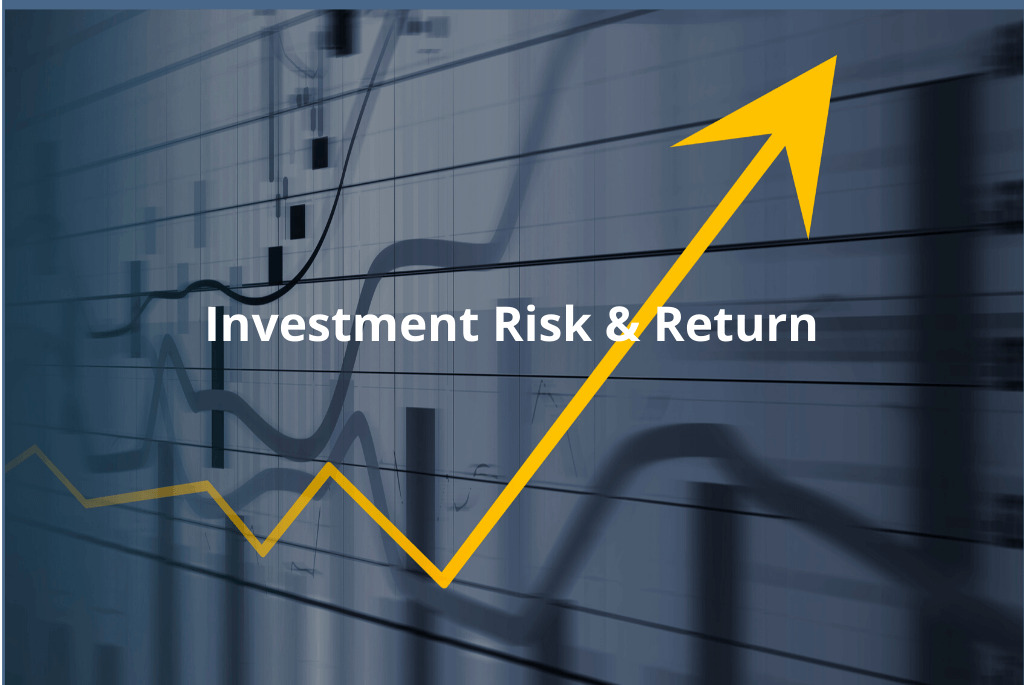The Risky Business of Investing in Stocks and Bonds
Everyone wants the upside gains of investing in stocks but without the risks of doing so. That’s understandable but not how it works. In this note, I’ll explain the riskiness of investing in stocks and bonds.
Risk is abstract so I’ll try make it more concrete by framing it a few different ways.
1. What is the range of investment returns over a one-year period?
- For stocks, the worst year was a loss of 44% (1931) and the best year was a gain of 63% (1933). That’s a wide range.
- For bonds, the worst year was a loss of 8% (1969) and the best year was a gain of 43% (1982). That’s a narrower range and a smaller maximum loss.
If you take a longer-term perspective and look over a 20-year horizon, the range of annualized average returns is much more tolerable:
- For stocks, the worst 20-year period was a gain averaging 4% (ending in 1948) and the best 20-year period was a gain of 18% (ending in 1999).
- For bonds, the worst 20-year period was a gain averaging 1% (1959) and the best 20-year period was a gain of 16% (ending in 1991).
Note how much the volatility narrows when you lengthen the time horizon.
2. How often are returns negative?
- Stocks lose money about one year out of every four.
- Bonds lose money about one year out of every five.
- Over any 20-year horizon, neither has lost money.
3. For the math nerds, another way to understand volatility is to look at the standard deviation of returns.
Using one-year returns:
- Stocks have a standard deviation of 20%.
- Bonds have a standard deviation of 8%.
Using 20-year average annual returns:
- Both narrow to just 3%.
Two conclusions seem clear:
- Stocks are more volatile than bonds. That’s the price you pay for their higher expected returns and there’s no escaping that relationship.
- Longer time horizons considerably dampen volatility. This point is crucial to recognize as you think about investing over your lifetime. If you can keep a long-term horizon (easier said than done), stocks have been almost a sure thing.
One more point about risk that most of us intuitively understand is that we know not to put all our eggs in one basket. Diversification reduces risk without limiting returns.
This is why investing in different assets such as international stocks, junk bonds, small companies, and commercial real estate can be sensible. Each asset class may be risky by itself, but combining them can dampen the overall risk of your portfolio without diminishing the expected returns. It is also why it is risky to have a large percentage of your net worth concentrated in a single stock such as your employer’s.
So, what does this mean for the average person who doesn’t want to think about this too frequently?
1. If it seems too good to be true, it is.
Stay away from hot stocks, your brother-in-law’s new restaurant concept, racehorses, bitcoin, complicated annuities, and anything else with a similar vibe. These are the foolish risks that are not compensated with higher expected returns.
2. Don’t buy individual stocks and bonds.
You’re incurring unnecessary risk by being undiversified. Instead, focus on the appropriate asset allocation — i.e., the mix of stocks, bonds, international securities, etc. — that makes sense for your risk tolerance, time horizon, and financial situation. Then invest in low-cost index funds for each asset class or even more simply, a target date fund.
3. Don’t time the market.
It’s a fool’s errand that will end in misery and regret. And, you need to be right twice — once when you decide to get out and then again when you decide to get back in. Good luck with that. To quote Warren Buffet, “The only value of stock forecasters is to make fortune tellers look good.”
4. Take more risk when you’re younger.
This is sensible for two reasons. First, you have more years of earning an income that can act as a “ballast” against the choppier returns of your investments. Second, you have the luxury of a long time horizon.
5. Take more risk when you have a higher income or more savings.
This is intuitive for reasons similar to #4. You have more of a cushion to absorb the losses when the inevitable down periods come.
6. Minimize investment expenses.
These are the fees you pay to own mutual funds, trade stocks, and engage an advisor. They are a dead-weight anchor you drag around, so the more expenses you incur, the less you keep for yourself. Over long periods of time, these small fees substantially reduce your wealth accumulation.
7. Minimize investment taxes.
Different investments have different tax characteristics. Optimize your use of retirement and other tax-advantaged accounts so you minimize how much you have to pay to the IRS. Like investment expenses, this is another dead-weight anchor that you don’t want to drag around.
8. Lastly, if you’re stressed, don’t check your account balance.
If you’ve followed my advice on #s 1 to 6, there’s no need to view your 401K. Let it go and focus on something in your life you can control.
You can’t beat the market but it doesn’t have to beat you up. Have a long-term horizon, take appropriate risks, diversify, and minimize your investment fees. Then, find something else to worry about.
